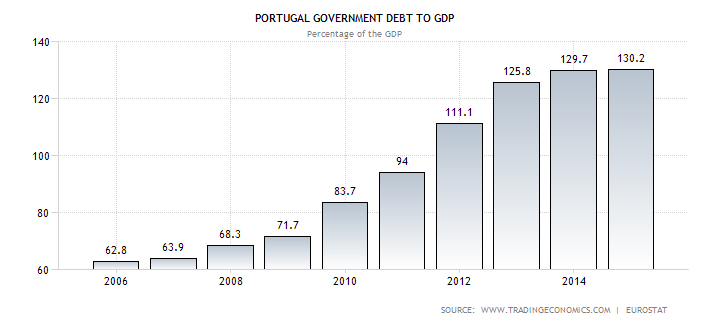For the first time in its country’s history, Portugal sold 6 month T-bills at a negative yield. The 300 million euros ($333 million) worth of bills due in November 2015 sold at an average yield of minus 0.002%. A negative yield means investors buying these securities will get back less money from the government than they paid when the debt matures.
To put this in perspective, the 10 year note in Portugal now yields just 2.38%, down from 18% a mere three years ago. Back in 2012, creditors grew wary of the countries referred to as PIIG’s (Portugal, Ireland, Italy and Greece) and their ability to pay back the massive amounts of outstanding debt. Consequently, creditors drove interest rates dramatically higher to reflect the added risk of potential defaults.
If a person had fallen into a deep slumber in the midst of the 2012 Eurozone debt crisis and awoke a week ago, they may make some reasonable assumptions as to why there was a collapse of Portuguese bond yields on the long end of the yield curve; and even displayed negative yields on the short end.
Perhaps Portugal had finally balanced their budget? Or even is now enjoying a budget surplus? To the contrary, that is not even close to the truth. Portugal has not balanced its budget…its budget deficit now sits at over 3% of GDP.
Or perhaps there was a massive restructuring of outstanding debt? Upon joining the Euro, Portuguese national debt was below the 60% limit set by the Maastricht Treaty criteria. By the start of the debt crisis in 2009, that level of public sector debt had edged up to 70% of GDP. However, the recession of 2009-12, saw a rapid increase in the level of debt. Â Despite recent efforts to reduce public spending and austerity measures pursued by the government, Portugal still has an immense and growing debt load, with a current National Debt to GDP ratio of over 130%.Â

Well then maybe there must be a dramatic deflationary cycle pushing those paltry nominal yields much higher in real terms?

